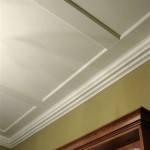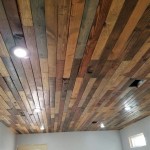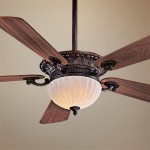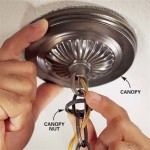Everything You Need to Know About In-Ceiling Surround Sound Systems
In-ceiling surround sound systems offer a discreet and aesthetically pleasing way to experience immersive audio. By integrating speakers directly into the ceiling, these systems minimize visible clutter while delivering high-quality sound throughout a room. This article provides a comprehensive overview of in-ceiling surround sound systems, covering essential aspects from planning and speaker selection to installation and optimization.
Planning Your In-Ceiling Surround Sound System
Before purchasing any equipment, careful planning is crucial for a successful in-ceiling surround sound setup. This planning phase involves several key considerations that will influence the system's overall performance and suitability for the specific space.
Room Dimensions and Layout: The size and shape of the room are primary determinants of speaker placement and the number of speakers required. Larger rooms generally benefit from more speakers to ensure even sound distribution. Irregularly shaped rooms may necessitate strategic speaker placement to avoid dead spots or excessive reflections. Consider factors such as furniture placement, window locations, and the presence of any architectural features that could impact sound quality.
Seating Arrangement: The location of the primary listening area, typically where the main seating is situated, significantly impacts speaker placement. The goal is to position speakers to create a balanced and enveloping soundstage for listeners in this area. Common surround sound configurations, such as 5.1, 7.1, and Dolby Atmos, require specific speaker placements relative to the listening position. Referencing diagrams and guidelines for these configurations is essential.
Wiring Considerations: Planning for wiring is a critical aspect often overlooked. Running speaker wire from the receiver to each speaker location requires careful consideration. Accessibility is paramount, especially in existing homes. Options include running wires through the attic or crawl space, using existing conduit, or employing wire channels. It's important to use high-quality speaker wire of the appropriate gauge to minimize signal loss. Furthermore, local building codes and electrical regulations must be adhered to.
Architectural Constraints: Existing ceiling structures, such as joists, ductwork, and lighting fixtures, can pose challenges to in-ceiling speaker installation. Before cutting any holes, thoroughly inspect the ceiling space to identify any obstructions. This may require using a stud finder, a borescope, or consulting architectural plans. Adjustments to speaker placement may be necessary to avoid interfering with these existing elements.
Selecting the Right In-Ceiling Speakers
Choosing the appropriate in-ceiling speakers is fundamental to achieving the desired sound quality and immersive experience. A variety of speaker types and features are available, each designed for specific purposes and performance characteristics.
Speaker Types:
- Two-Way Speakers: These are the most common type of in-ceiling speakers, featuring a woofer for low and mid-range frequencies and a tweeter for high frequencies. They offer a balanced sound reproduction suitable for a wide range of audio content.
- Three-Way Speakers: These speakers add a mid-range driver to the woofer and tweeter, resulting in enhanced clarity and detail, particularly in the mid-frequency range. They are often preferred for critical listening applications.
- Coaxial Speakers: In coaxial speakers, the tweeter is mounted in the center of the woofer. This design provides a more focused sound projection and improved imaging.
- Angled Speakers: These speakers feature tweeters that can be angled towards the listening area, allowing for more precise sound direction and improved soundstage. They are particularly useful in situations where speaker placement is not ideal.
Speaker Size and Power Handling: The size of the woofer generally correlates with the speaker's ability to reproduce low frequencies. Larger woofers (e.g., 8 inches) are typically better suited for larger rooms and applications where strong bass response is desired. Power handling refers to the maximum amount of power the speaker can handle without distortion or damage. Matching the speaker's power handling to the amplifier's output is crucial for optimal performance and longevity.
Sensitivity and Impedance: Sensitivity measures the speaker's efficiency in converting power into sound. Speakers with higher sensitivity require less power to produce a given sound level. Impedance, measured in ohms, represents the speaker's resistance to electrical current. It's important to match the speaker's impedance to the amplifier's impedance for proper power transfer and to avoid damaging the amplifier.
Features to Consider: Some in-ceiling speakers offer features such as paintable grilles, which allow them to blend seamlessly with the ceiling. Moisture resistance is a desirable feature for speakers installed in bathrooms or other humid environments. Pivoting tweeters provide greater flexibility in directing sound towards the listening area. Magnetic grilles offer a clean and easy way to attach and detach the speaker grilles.
Installation Process and Best Practices
Proper installation is essential for maximizing the performance and longevity of an in-ceiling surround sound system. The installation process involves several steps, each requiring careful attention to detail.
Safety Precautions: Before starting any installation work, ensure that the power to the circuit breaker controlling the area is turned off. Wear appropriate safety gear, including safety glasses and gloves. Use caution when working at heights and ensure that ladders are stable and properly positioned.
Cutting the Holes: Use a stud finder to locate ceiling joists and avoid cutting into them. Use a drywall saw or a hole saw to cut the holes for the speakers, following the template provided by the speaker manufacturer. Ensure that the holes are the correct size and shape for the speakers. Take extra care to avoid damaging any existing wiring or plumbing.
Running the Wires: Run the speaker wires from the receiver to each speaker location. Secure the wires to ceiling joists or other structural elements using staples or cable ties to prevent them from dangling. Label each wire at both ends to avoid confusion during connection. Ensure that the wires are properly insulated and protected from damage.
Connecting the Speakers: Connect the speaker wires to the speakers, ensuring that the polarity is correct (positive to positive and negative to negative). Use wire connectors or solder to make secure and reliable connections. Carefully insert the speakers into the holes and secure them using the mounting hardware provided by the speaker manufacturer. Ensure that the speakers are flush with the ceiling and that the grilles are properly attached.
Testing and Calibration: After the installation is complete, turn the power back on and test the system. Use a test tone generator or a calibration microphone to verify that all speakers are working properly. Adjust the speaker levels and equalization settings on the receiver to optimize the sound quality for the specific room. Consider using a sound level meter to ensure that the speakers are balanced and that the sound is evenly distributed throughout the listening area.
Optimizing Your In-Ceiling Surround Sound System
After the installation, optimizing the system ensures the best possible audio performance. This involves fine-tuning speaker settings, addressing room acoustics, and properly configuring the receiver.
Speaker Calibration: Most modern AV receivers have automatic calibration features. These features use a microphone to analyze the sound in the room and automatically adjust the speaker levels, distances, and equalization settings for optimal performance. While these automated systems are a good starting point, consider making manual adjustments based on personal preference and listening experience.
Room Acoustics: Room acoustics significantly impact the sound quality. Hard surfaces, such as walls and floors, can cause reflections that muddy the sound. Soft surfaces, such as carpets, curtains, and upholstered furniture, can absorb sound and reduce reflections. Consider adding acoustic treatments, such as acoustic panels or bass traps, to improve the room's acoustics and reduce unwanted reflections. Proper placement of these treatments can significantly enhance clarity and imaging.
Receiver Settings: Explore the various sound modes and processing options available on the receiver. Experiment with different settings to find the ones that sound best for different types of content. Understand the difference between different surround sound formats, such as Dolby Digital, DTS, and Dolby Atmos, and choose the appropriate format for the source material. Ensure that the receiver is properly configured for the specific speaker configuration (e.g., 5.1, 7.1, Dolby Atmos). Consider using the receiver's bass management features to optimize the bass response for the room and speakers.
Subwoofer Integration: A subwoofer is essential for a full surround sound experience, especially for reproducing low frequencies. Proper placement of the subwoofer is crucial for achieving optimal bass response. Experiment with different locations to find the spot where the bass sounds the most even and balanced. Use the receiver's crossover settings to blend the subwoofer seamlessly with the other speakers. Adjust the subwoofer's level to achieve a balanced and natural sound.

Ceiling Speakers Everything To Know Before Install In 2024

In Wall And Ceiling Speaker Placement Installation

Step By Guide To Connecting Ceiling Speakers A Receiver

Ceiling Speakers Everything To Know Before Install In 2024

In Wall And Ceiling Speaker Placement Installation

Best Home Theater In Wall Ceiling Speaker Types Audio Advice

Dolby Atmos Integra Home Theater

Top 5 In Ceiling Speakers For Surround Sound

Serious About Surround Sound Why Ceiling Speakers May Not Be For You Orbitsound

Best In Wall And Ceiling Surround Sound Systems For 2024
Related Posts








